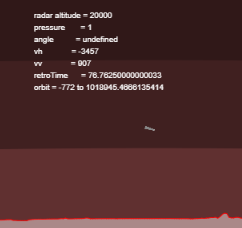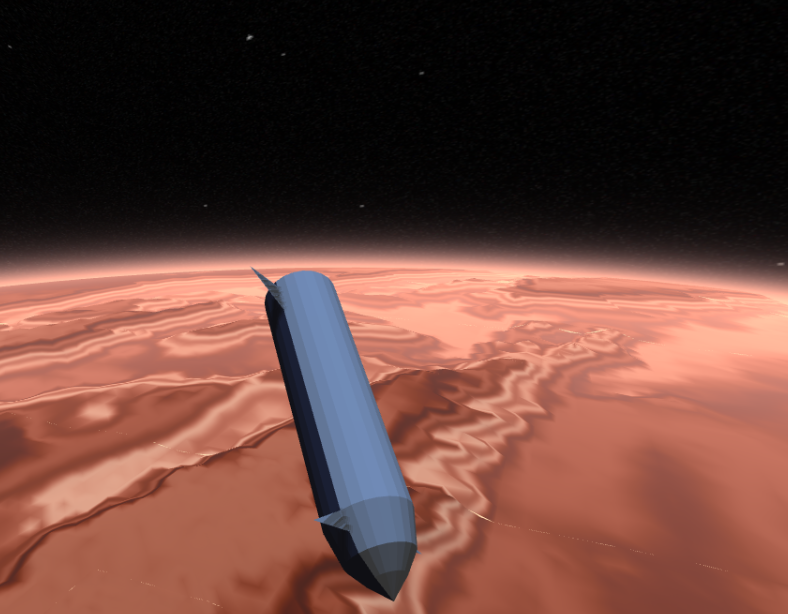2D quantum mechanics simulations
This is part 2 of the quantum mechanics for programmers article.Part 1
Let's try a 2D schrodinger equation: $$i \frac{\partial \psi}{\partial t} = -\frac{\partial^2}{\partial x^2}\psi -\frac{\partial^2}{\partial y^2}\psi + \frac{1}{\sqrt{x*x+y*y+\alpha}}\psi.$$ The extra parameter, $\alpha$ isn't a physical thing, but we'll need it to make sure that we don't have a 1/0 value for the potential anywhere.
// This returns an empty wavefunction of length n.
function wavefunction(n){
var psi = [];
for(var i = 0; i < n; i++){
psi[i]=[];
for(var j = 0; j < n; j++){
psi[i][j] = {real: 0, imag: 0}
}
}
return psi; // for example [{real:0, imag:0}, {real:0, imag:0}, ...]
}
// This takes the starting wavefunction, and returns the wavefunction a short time later.
function timestep(psi)
{
// This is how many units of time we're going to try to step forward.
var dt = 0.02;
psi = timestepV(psi, dt);
psi = timestepT(psi, dt);
return psi;
}
function timestepV(psi, dt)
{
var n = psi.length;
for(var i = 0; i < n; i++)
{
for(var j = 0; j < n; j++){
// This is the x that is in the equation above.
var x = (i-n/2)
var y = (j-n/2)
// This is the potential at this point.
var V = 1.0 / Math.sqrt(x*x + y*y + .01);
var theta = dt * V;
var c = Math.cos(theta);
var s = Math.sin(theta);
var re = psi[i][j].real * c - psi[i][j].imag * s;
var im = psi[i][j].imag * c + psi[i][j].real * s;
psi[i][j].real = re;
psi[i][j].imag = im;
}
}
return psi;
}
function timestepT(psi, dt){
psi = FFT.fft2d(psi);
var n = psi.length;
for(var i = 0; i < n; i++)
{
for(var j=0;j < n; j++)
{
var k = 2 * 3.1415927 * Math.min(i, n-i) / n;
var l = 2 * 3.1415927 * Math.min(j, n-j) / n;
var theta = (k * k + l*l) * dt;
var c = Math.cos(-theta);
var s = Math.sin(-theta);
var re = psi[i][j].real * c - psi[i][j].imag * s;
var im = psi[i][j].imag * c + psi[i][j].real * s;
psi[i][j].real = re;
psi[i][j].imag = im;
}
}
return FFT.fft2d(psi);
}
// This returns the initial state of the simulation.
function init(){
var n = 64;
var psi = wavefunction(n);
for(var i = 0; i < n; i++){
for(var j = 0; j < n; j++){
psi[i][j].real = Math.exp(-((i-20)*(i-20) + (j-20)*(j-20))/(5*5))*4;
psi[i][j].imag = 0;
}
}
return psi;
}
What next?
If you want to play more with this, to simulate a double slit experiment, or to get it to interact with the mouse, just copy this webpage, and play with the code.Context
The technique shown here is good for making simulation videos because it's simple. It's not used all that much in actual research for several reasons: The task of simulating a 2-D system isn't all that useful. Higher dimensional systems can be simulated too, and there are very many ways of doing this: It's a huge topic. Density functional theory is one example: Effectively, it's just solving very high dimensional quantum mechanics problems. The way it's solved is completely different to the methods discussed here. For 1-D or 2-D systems, for instance studying 2-atom molecules with known or zero rotational angular momentum, the split-operator method is used, but it's often more accurate / faster to use a chebyshev expansion of the propagator --- my PhD used a chebyshev expansion of the operator to solve Rb2 collision problems.Other Articles:

|
Mars LanderAn interactive simulation of a Mars Lander trying to land on Mars. The term "interactive" here means that you have to write the software, in Javascript, that will land the probe. |
Mars Re-EntryA ThreeJS simulation of Mars re-entry in a spaceship. |

|
AsciishipMy latest (early 2018) thing is just a "normal" game: no real physics. It's just a game. |

|
© Hugo2015. Session @sessionNumber